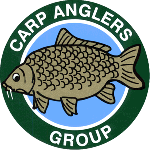
As any avid carp angler knows, catching big (defined as being the biggest fish in your waters) carp consistently isn�t the easiest thing in the world to do. These specimens have probably been around for many years and survived many dangers, making them extremely wise and cautious. There are the last ones to act rash, throw caution to the wind and raid a big bed of groundbait like their smaller, inexperienced relatives. This coupled with the fact that there are lots of small fish for every one giant makes their consistent capture very difficult. The presentation and bait, location and timing have to be just about perfect for the biggest fish to accept your offerings.
Many good articles have been written about top presentation and baits, this article is about putting yourself in the right place at the right time much more often, therefore improving your chances at that monster. Since I generally don�t us very sophisticated rigs and baits, I try to concentrate on fishing peak times on my big fish waters and doing this has accounted for well over two dozen carp over 30 pounds for me. Taking advantage of these peak times when giant carp become a little less wary and more predictable will account for an improved big fish rate.
Through much exploration, I have several waters in which I concentrate and they all have different characteristics. Large and small flow river, big deep waters, small ponds and even tidal waters.
Step 1: is getting to know the characteristics of your waters and understanding the way they affect the behavior of the biggest carp in them.
Step 2: is identifying the peak activity time for big carp on these waters and putting together a plan to utilize your fishing time on them.
Pre-Spawn: In some waters I fish, the crackers are most predictable during the pre-spawn. In a big deep water that I fish, giant females will stage at the mouths of inlet creeks and near the points of shallow bays when the water temperature rises to the upper 50s. They are actively feeding in preparation for the spawn, while the smaller males are already cruising the shallows. Peak time here then would be in late May, during a sustained warm sunny spell near a full-moon phase. I will try to concentrate on having the choice swims prebaited and getting on these swims when the big females are the most active, that is my plan of action here. In another much smaller pond that I fish the carp generally act the same way, but the water typically warms much earlier. Being on choice swims a couple of weeks earlier is generally a good idea, but I look for the same things.
Summer Post-Spawn: On other waters that I fish during the post-spawn and summer, when the water temperatures rises over 75 F, the bigger carp are easier to pattern. One example of this is a big deep large-flow river, where the big ones are very active shallow real early in the mornings. During mid-day the carp move to the deep water near a drop-off and hold fairly tight. Later in the afternoon, they tend to cruise in loose schools feeding until they move back into the shallows at night. My plan here is to arrive during the wee-hours of the morning and prebait shallow swims. When the heat of the day comes, I start loading the drop-off with goundbait and concentrate here and so on. I also try to be here on cloudy, pre-front conditions to improve my odds.
I also concentrate on a shallow, running river during the summer, stalking the biggest ones during the morning before they move to the faster water during mid-day I will try to be here after thunderstorms and pre-front conditions.
Fall Fishing: In still another venues that I fish, the giant carp become very active after the first few cold snaps in September or October. In this tidal water, larger schools of wackers form actively feeding in preparation for winter and continue to do so until the water temperature drops below 45f. These carp tend to roam long distances, but generally relate to a man made structure and large flats with river grass. Fishing a choice swim at low tide through the incoming, feeding the swim a little and often as you generally cant hold these fish in one spot. The full and new moon phases definitely produce more giants, and bigger baits like 40mm boilies can produce great number of 25+ pounders!
If you have a warm water discharge on your water your in big business during colder months. I try to be at them at night during the winter. Bigger fish will become active at these discharges at night.
These are all some plans I incorporate to increase my catches of big carp. Most carpers don�t have the 24-48 hours to invest in every session, I sure don�t, so maximizing your efforts during peak times in your waters will pay off big, compared to just doing a little carpin here or there. Maybe you waters are different, the important thing is to learn many different waters, be versatile in your baits and techniques and plan on being at you waters when the biggest fish are most active
Scott Osmond,
September, 2000